Looking for information about how French drains work? If so, you’ve landed on the right page because that’s what we’re going to review in this article. We’ll review what French drains are, how they work, their benefits, installation procedures, and more.
What Is a French Drain?
Note: People use the term “French drain” in different ways. They use it to mean a drainage system installed right underneath your grass to channel yard drainage away from the foundation. However, you’ll also see people use the term “French drain” when talking about a drainage system installed around the perimeter of your home’s foundation at the footing level. This is also known as a footing drain or drain tile.
Both drain systems – those for yard drainage and for drainage around the foundation – are designed to prevent excess moisture from building up in the ground around the foundation. In this article, we’re going to use the term “French drain” to talk about the drainage system that goes around the perimeter of the foundation. Just keep in mind that you will run into information elsewhere about “French drains” for yard drainage.
French drains are typically made using perforated PVC pipes placed in a gravel-filled trench around the outside perimeter of the foundation at the footing level. Groundwater flows into the pipes and gets directed toward a sump pit. When the sump pit fills with water, a sump pump turns on and ejects the water away from the foundation.
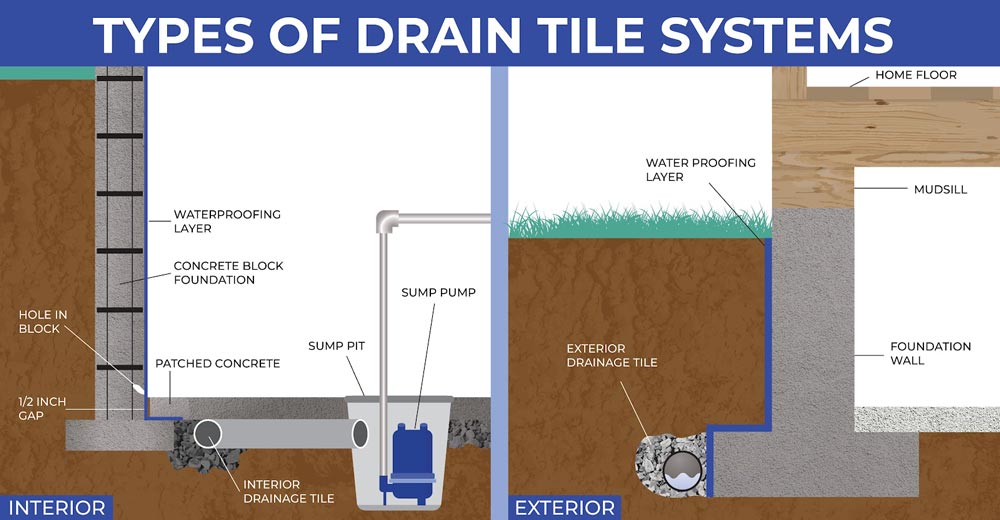
French drains are an essential element in protecting the structural integrity of a building’s foundation. Without proper drainage, water can accumulate in the ground around the house and cause serious problems for the foundation including bowed and/or cracked basement walls..
A French drain, because it keeps the ground around the foundation dry, also protects against moisture build-up and the growth of mold and mildew in the basement or crawl space.
See How A Drain Tile System Can Save You Money for more information.
How Does a French Drain Work?
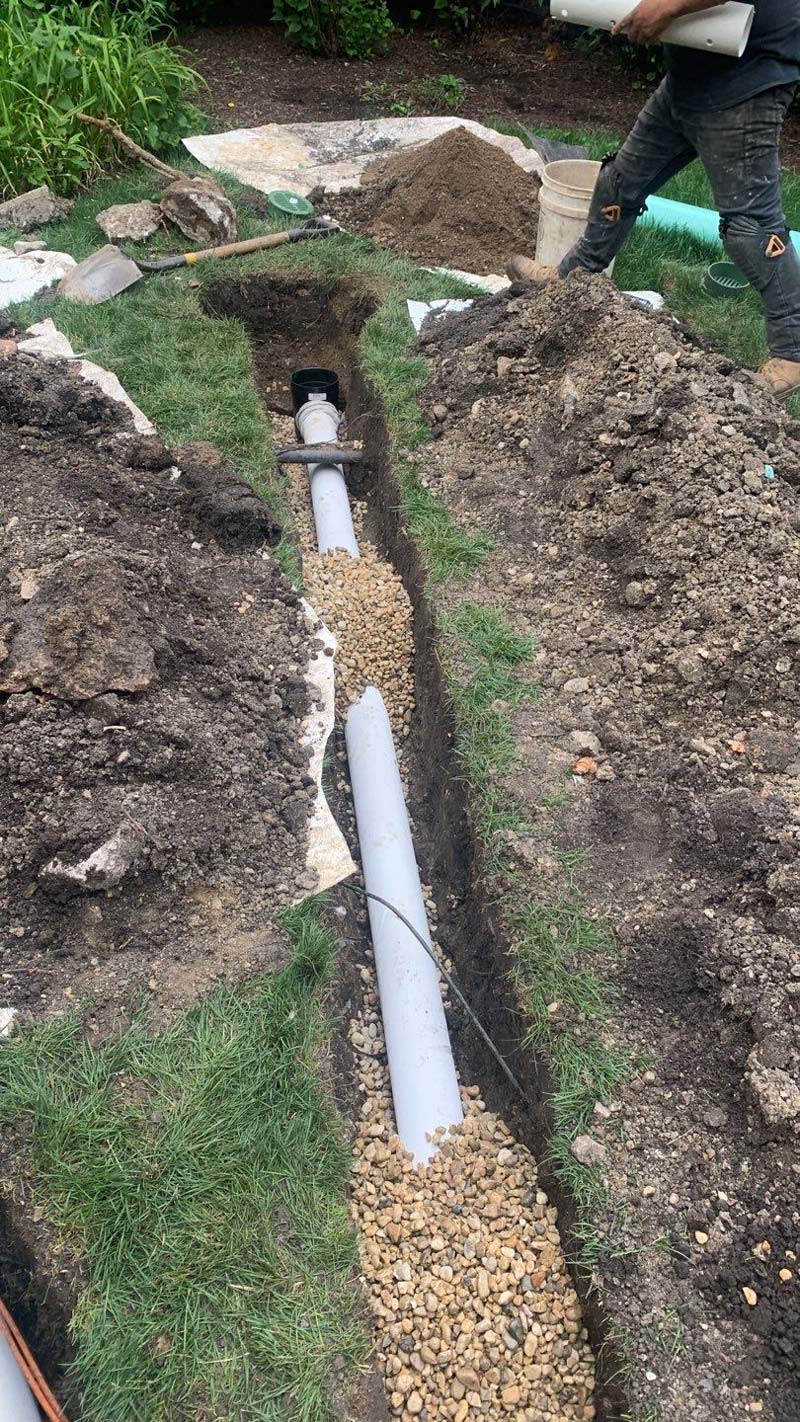
A French drain works by collecting and channeling groundwater that would otherwise seep into the foundation into a designated outlet, such as a sump pit, where it’s then ejected away from the foundation via a sump pump. There are two types of French drains: exterior and interior. The exterior type is installed around the outside perimeter of the foundation at the footing level. An interior French drain is installed around the inside perimeter of the basement or crawl space.
Exterior French Drain Installation
The general installation procedure for an exterior French drain is as follows:
- The soil around the foundation is excavated down to the footing.
- A shallow trench is dug and lined with gravel.
- A perforated drainage pipe is placed into the trench and covered with more gravel. (The gravel acts as a filtration medium that enables water to seep into the pipe while preventing debris from getting inside.)
- The excavated soil is replaced.
Groundwater flows into the drainage pipe and is carried away from the foundation to the sump pit. Once the sump pit is full, a sump pump turns on and releases the water away from the foundation.
Interior French Drain Installation
The general installation procedure for an interior French drain in a basement is as follows:
- A jackhammer is used to break up the slab around the inside perimeter of the basement.
- Like an exterior French drain system, a shallow trench is dug and lined with gravel.
- The perforated drainage pipe is placed on the gravel and covered with more gravel.
- Finally, the slab is replaced.
As with an exterior French drain, excess ground moisture flows into the perforated pipe toward a sump pit and is ejected away from the foundation via a sump pump.
Benefits of a French Drain
The benefits of a French drain include the following:
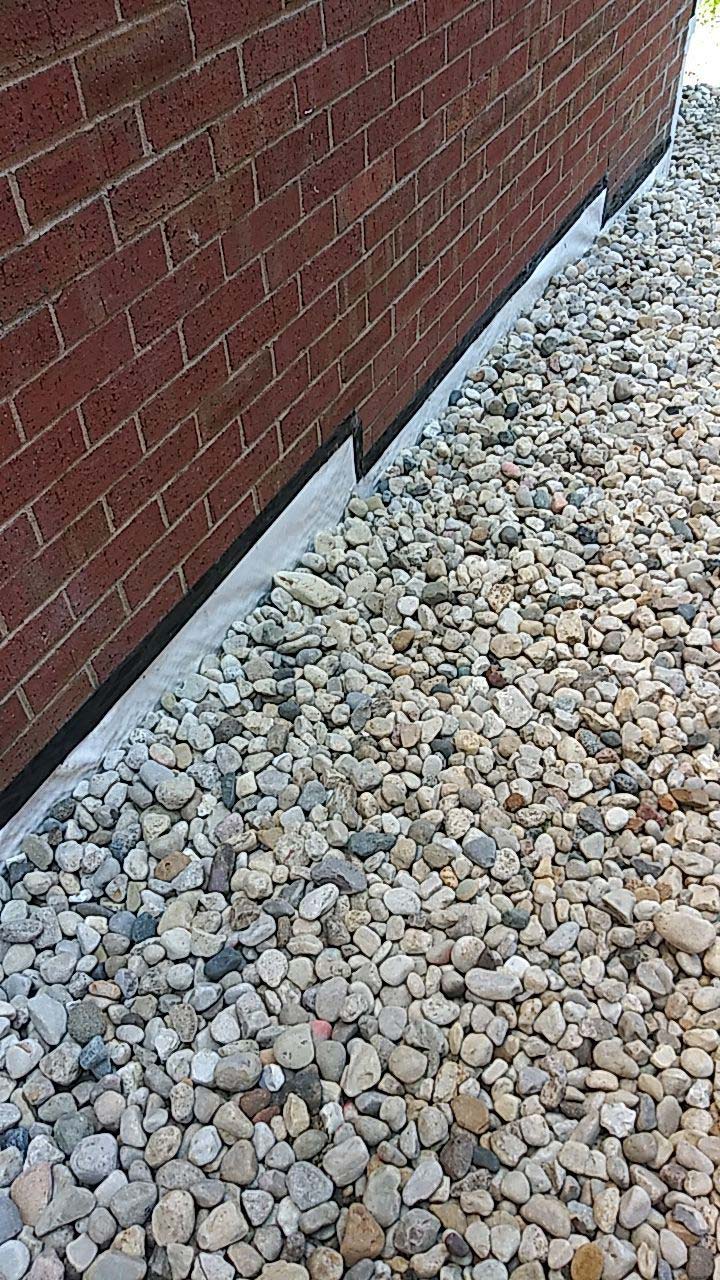
- French drains prevent hydrostatic pressure from building up in the ground around the foundation. Without this pressure, the foundation stays stable, and you don’t have to worry about issues such as bowed and/or cracked foundation walls. This can save homeowners from costly repairs.
- A French drain also helps protect a foundation from damage caused by expansive soil, a type of soil that expands and pushes against the foundation when it soaks up moisture and then shrinks as it dries out. If your home is built on expansive soil, you don’t want fluctuations in the soil moisture level.
- Another advantage of a French drain is that it can help prevent soil erosion around the foundation. If your home is built on erosion-prone soil, excess groundwater can cause soil to wash away, destabilizing your foundation and leading to costly repairs.
A French drain is an eco-friendly way to manage water and prevent potential damage. If you’re looking to safeguard your property from water damage, installing a well-designed French drain can help reduce the risks of structural problems and keep your basement or crawl space dry.
How Much Does a French Drain Cost?
The cost of installing a French drain varies significantly depending on a range of factors, such as the size of the property, the type of soil, and how much labor is required. In general, installing a footing drain can range from $9,000-$13,000, although it can be significantly higher for larger or more complex properties.
When considering the cost of installing a French drain, consider the long-term benefits, such as protecting the foundation against water-related issues like hydrostatic pressure. While a French drain isn’t the most inexpensive waterproofing option, it’s considered a gold standard and a worthwhile investment to protect your home.
Does a French Drain Really Work?
Yes, French drains really work. A properly installed French drain can increase the lifespan of a foundation, prevent basement flooding, foundation damage, and reduce the risk of mold growth.
However, a French drain alone is not a one-size-fits-all solution for every home. Many factors, such as soil composition, slope, and weather conditions, can impact the system’s performance. Moreover, a poorly installed or maintained French drain can develop problems. Therefore, it’s essential to consider the site’s unique conditions and ensure proper installation and maintenance to maximize its benefits.
Do I Need a French Drain?
It depends. If you live in an arid region, you might not need a French drain. If you live anywhere else, you could probably benefit from installing a French drain. As noted above, without a French drain, water can seep into your foundation, causing cracks and weakening the structure of your home. This can lead to costly repairs and even decreased property value. Additionally, French drain installation is often required by building codes in many areas.
Is Installing a French Drain a DIY Project?
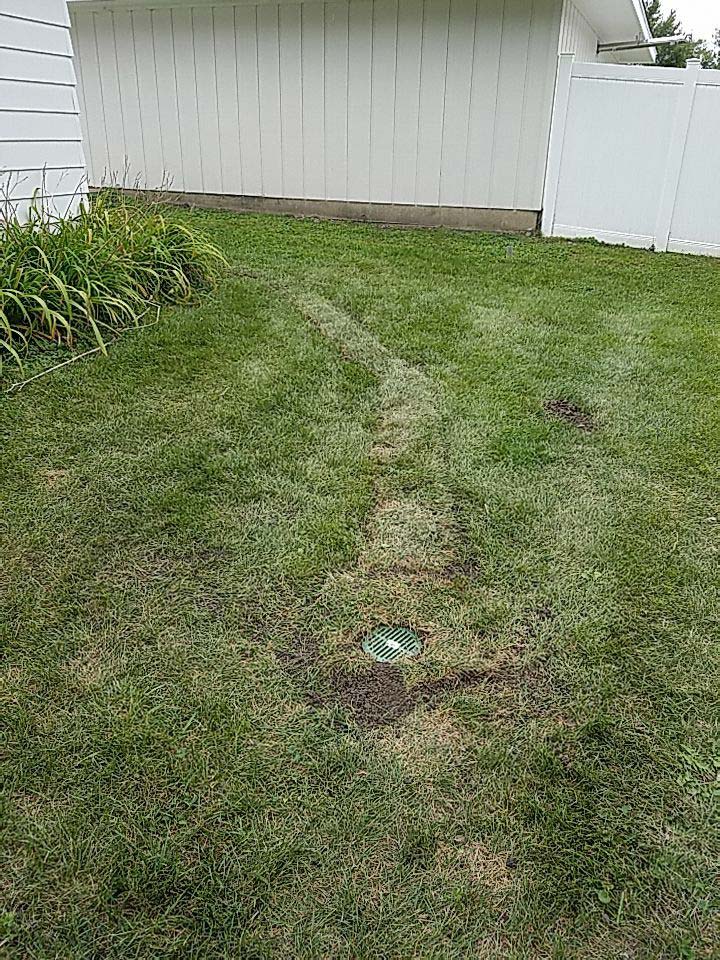
We don’t recommend installing a French drain as a DIY project for the following reasons:
- Installing a French drain may seem straightforward, but it’s not as easy as it appears. It requires training, experience, and specialized materials to achieve optimal results.
- Digging a trench on your property might cause unforeseen damage to the existing infrastructure, such as underground utilities or pipelines.
- French drains are subject to strict codes and standards, which must be met for the system to function correctly. Non-compliance might result in faulty installation, drainage blockages, or ineffective waterproofing, leading to future water damage and dampness issues.
If you’re considering a French drain for your Chicagoland property, contact The Real Seal Basement Waterproofing and Foundation Repair today to schedule an evaluation and receive an estimate.
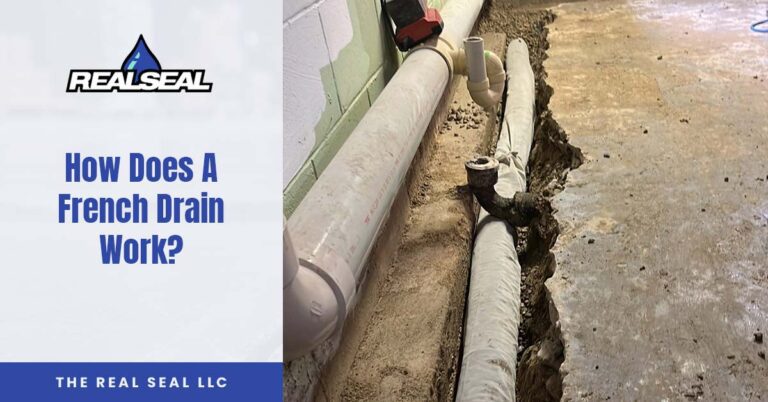
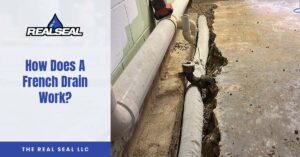





2 Responses
Hi Austin! Great article; very educational. We moved into a new house last may and we were told we had a “French drain” and shown where it was. It looks nothing like the photos you provided and most is on the top of the surface of the ground. Just wondering if you could give us some pointers to improving/removing the system we have. It does NOT work. Thanks in advance!! Ps I’d be happy to email you photos of what we’re working with if that would help.
Hi Alicyn!
A French Drain is designed to be at the surface of the soil on the outside. If the system is not working, you will likely need to get it replaced. Best to call a good Landscaper or Waterproofer to get those lines re-done so they function properly.